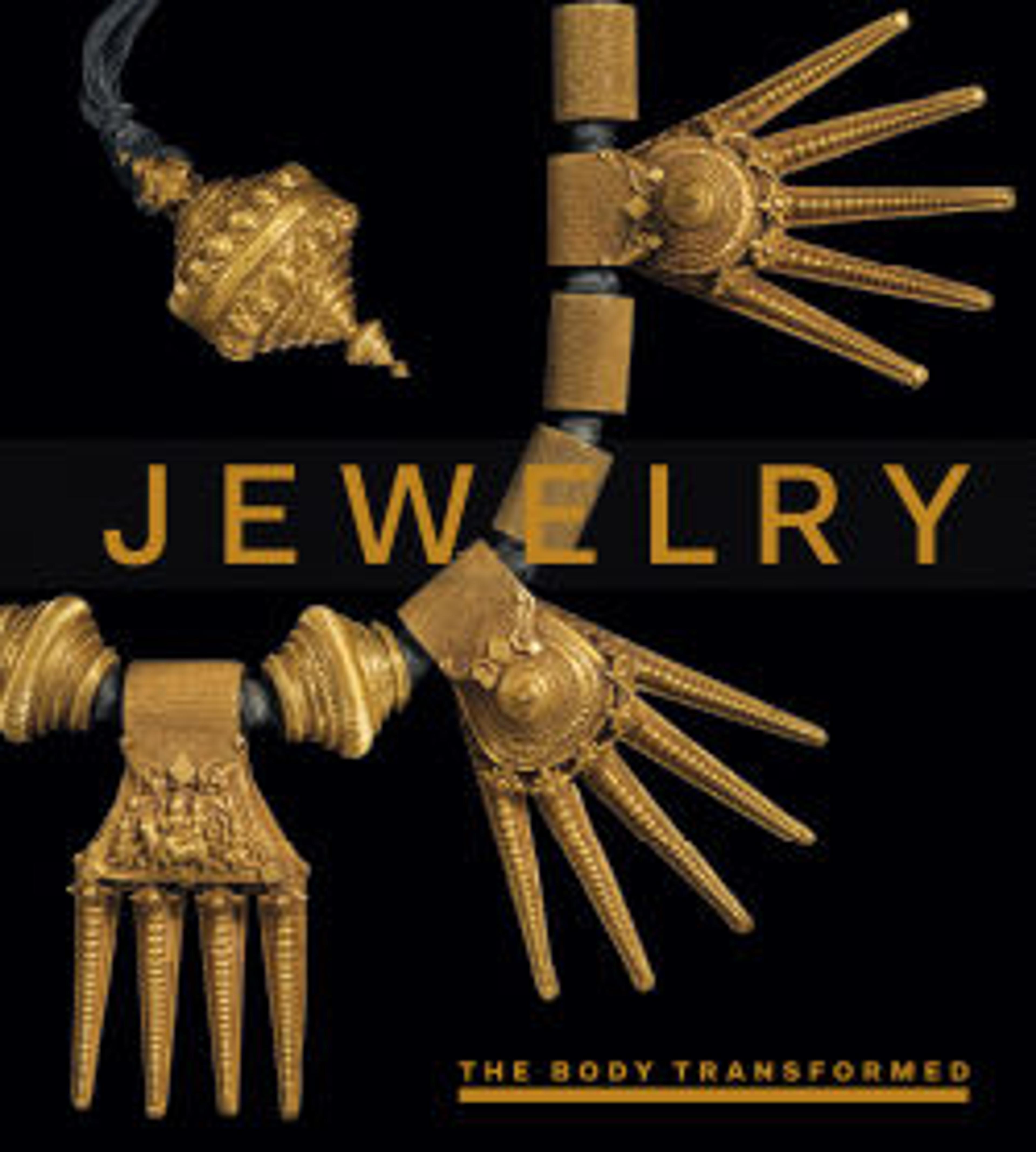Eleven piece parure
The opening of Japanese ports to Western trade in the late 1850s fostered a taste for all things Japanese. By the 1870s, Japonisme had become as de rigeur in jewelry as it was in ceramics, silver, furnishings, fashion, and gardens. Especially admired was shakudo, a technique in which colored metals such as gold, silver, and copper are inlaid into a dark patinated ground to resemble black lacquer. The present parure of matched jewelry appears to have been constructed in England from imported pieces of shakudo. This extensive and very fashionable suite is housed in a specially-fitted leather case stamped by the elite London firm Hunt & Roskell, silversmiths and jewelers to Queen Victoria.
Artwork Details
- Title: Eleven piece parure
- Maker: Hunt & Roskell
- Date: ca. 1875
- Culture: British
- Medium: Shakudo, gold
- Dimensions: Cross wtih fan-shaped top: 3 7/8 × 1 15/16 × 1/4 in. (9.8 × 4.9 × 0.7 cm)
Necklace chain: 31 11/16 in. (80.5 cm)
Bracelet of plaques: 1 7/16 × 3/16 × 8 1/4 in. (3.7 × 0.5 × 21 cm)
Bracelet of chain: 1 7/16 × 3/16 × 7 7/8 in. (3.7 × 0.5 × 20 cm)
Brooch: 1 7/16 × 1 1/8 × 3/8 in. (3.7 × 2.9 × 1 cm)
Pair Hairpins: 4 3/16 × 1 3/8 × 3/16 in. (10.7 × 3.5 × 0.5 cm)
Pair Earrings: 1 5/16 × 9/16 × 7/16 in. (3.4 × 1.5 × 1.1 cm)
Pair cuff links: 7/8 × 1 3/8 × 1/4 in. (2.2 × 3.5 × 0.7 cm) - Classifications: Jewelry, Metalwork-Gold and Platinum
- Credit Line: Gift of Albion Art Co. Ltd., 2018
- Object Number: 2018.447.2a–l
- Curatorial Department: European Sculpture and Decorative Arts
More Artwork
Research Resources
The Met provides unparalleled resources for research and welcomes an international community of students and scholars. The Met's Open Access API is where creators and researchers can connect to the The Met collection. Open Access data and public domain images are available for unrestricted commercial and noncommercial use without permission or fee.
To request images under copyright and other restrictions, please use this Image Request form.
Feedback
We continue to research and examine historical and cultural context for objects in The Met collection. If you have comments or questions about this object record, please contact us using the form below. The Museum looks forward to receiving your comments.
